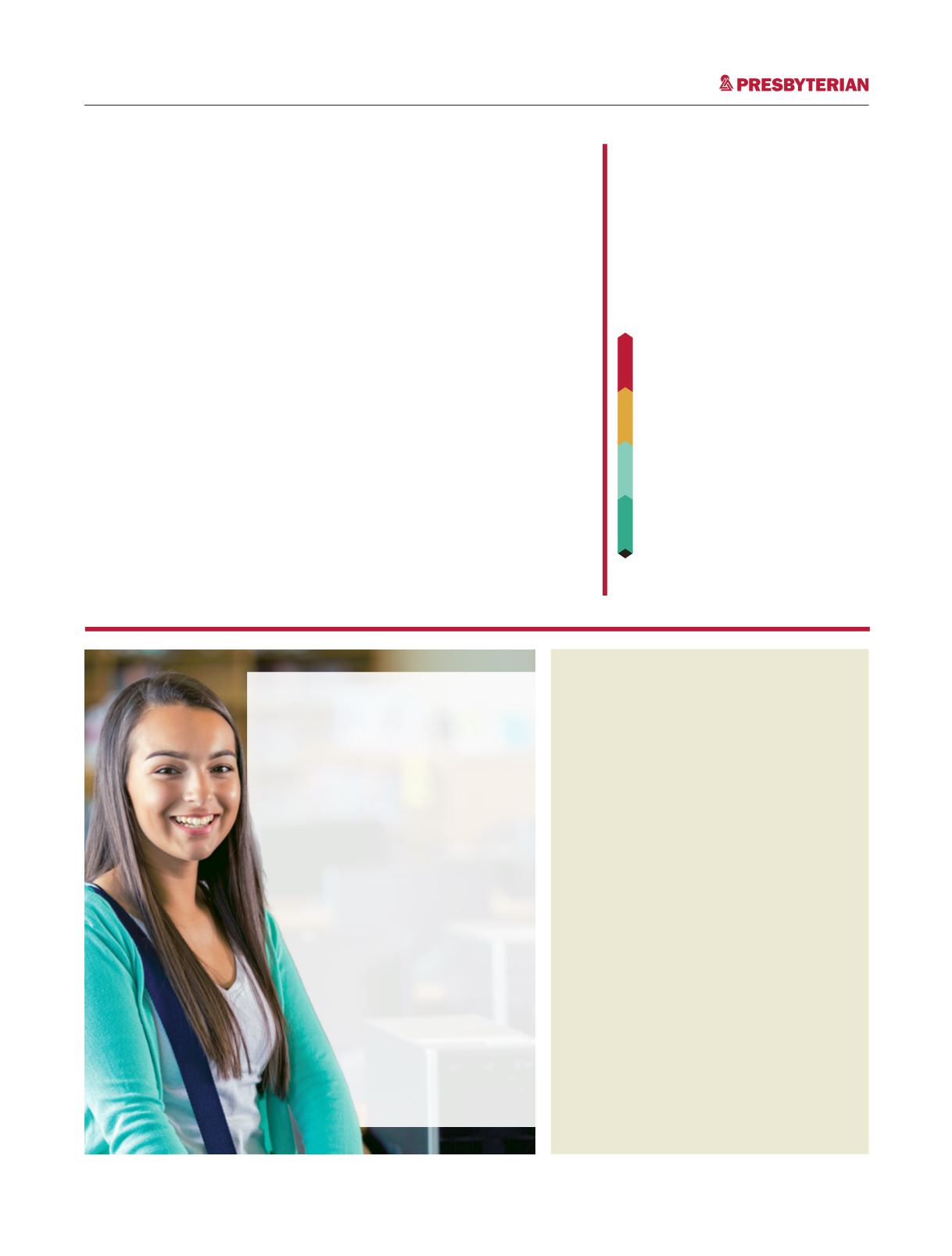

4
HIGH BLOOD PRESSURE
Spotting a problem
Usually when you have a health problem,
your body sends signals so you know
something is not right. High blood
pressure often has no symptoms.
The best way to know if your blood
pressure is high is to have it checked
by a medical professional. The
American Academy of Family Physicians
recommends a blood pressure check at
least once every two years. Your doctor
may suggest checks that are more often
if you have had high blood pressure in
the past or if your family has it.
Blood pressure normally goes up and
down during the day. If it stays high for
too long, it can cause problems. Also
called hypertension, high blood pressure
can increase your risk for heart disease,
heart failure, stroke, and kidney disease.
WHAT YOU CAN DO
If you have high blood pressure or
prehypertension, you may be able to get
it under control by making changes in
your lifestyle, such as:
■
■
Not smoking
■
■
Losing weight if you’re overweight
■
■
Exercising regularly
■
■
Eating a healthy, low-fat diet that
includes lots of fruits and vegetables
■
■
Limiting your intake of sodium and
caffeine
■
■
Avoiding alcohol
■
■
Learning to relax
If lifestyle changes alone do not bring
down your blood pressure, medication
may be needed. And remember: Call
your doctor’s office to get your blood
pressure checked at least once every two
years.
What the numbers mean
Blood pressure is measured by two
numbers. The first number—systolic
pressure—is measured when the heart
beats. The second number—diastolic
pressure—is measured when the heart rests.
The American Heart Association places
blood pressure levels in these categories:
High, stage 2
—The first number is 160
or higher. The second number is 100
or higher.
High, stage 1
—The first number is
140-159. The second number is 90-99.
Prehypertension
—The first number is
120-139. The second number is 80-89.
Normal
—The first number is less
than 120. The second number is less
than 80.
Your rights and
responsibilities and
privacy notice
As a Presbyterian member, you have certain rights
and responsibilities. Our partnership with you is
best when we ensure your rights and you meet
your responsibilities.We follow the Americans
with Disabilities Act (ADA).We also follow federal
and state laws as required. You can find member
rights and responsibilities on
www.phs.orgat
www.phs.org/Pages/member-rights.aspx.
NOTICE OF PRIVACY PRACTICES
The notice of privacy practices describes how
Presbyterian safeguards your Protected Health
Information and your rights with regard to that
information.
You can find the “Joint Notice of Privacy
Practices” on
www.phs.orgat
http://docs.phs.
org/idc/groups/public/@phs/@marketing/ documents/phscontent/wcmprod1029971.pdf .Transition
from
pediatric to
adult care
When an adolescent member turns
18 (21 for Medicaid members) or is
pregnant, he or she may need care that
is different from what they have been
receiving. Presbyterian can help you
to move from pediatric care (care
for children) to adult primary care.
This includes helping pregnant
members find an obstetrician. If
you are 18 years old or turning
18 or if you are pregnant,
contact customer service
to help get the providers
and care that you need.
















